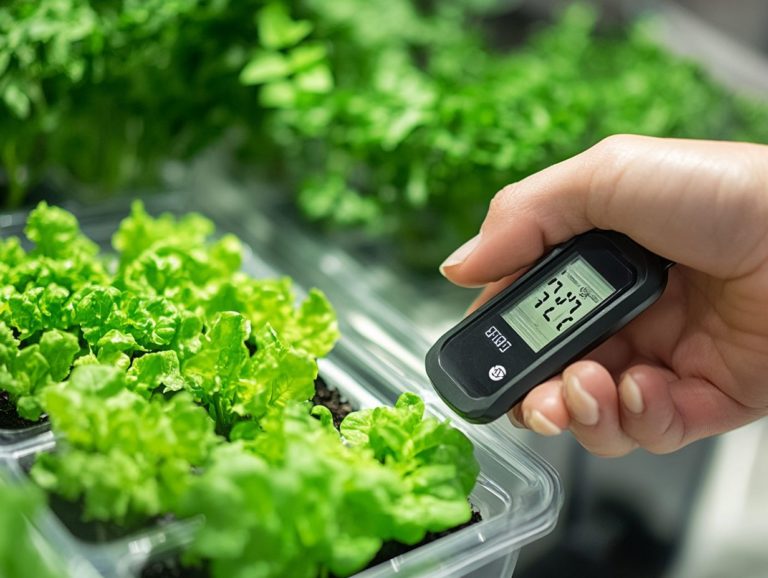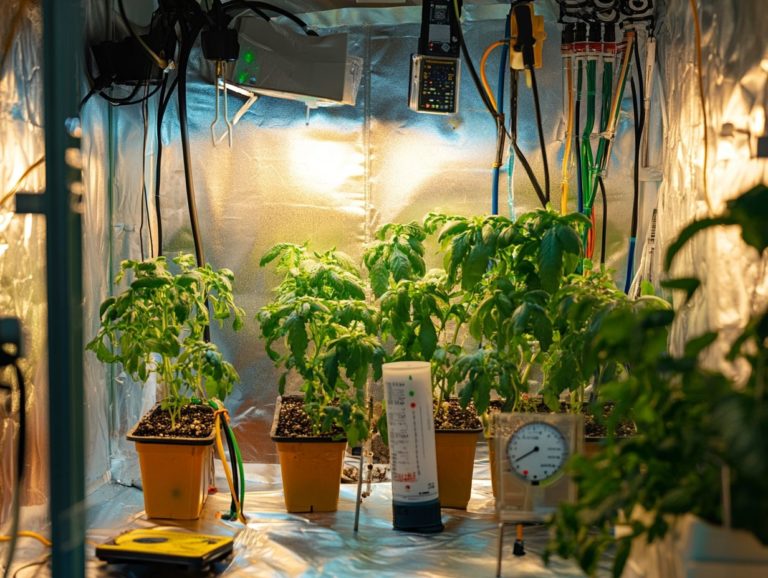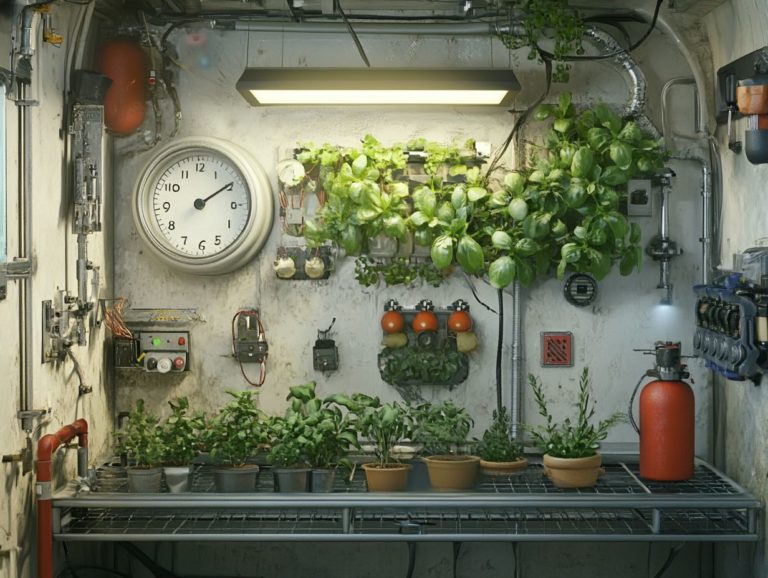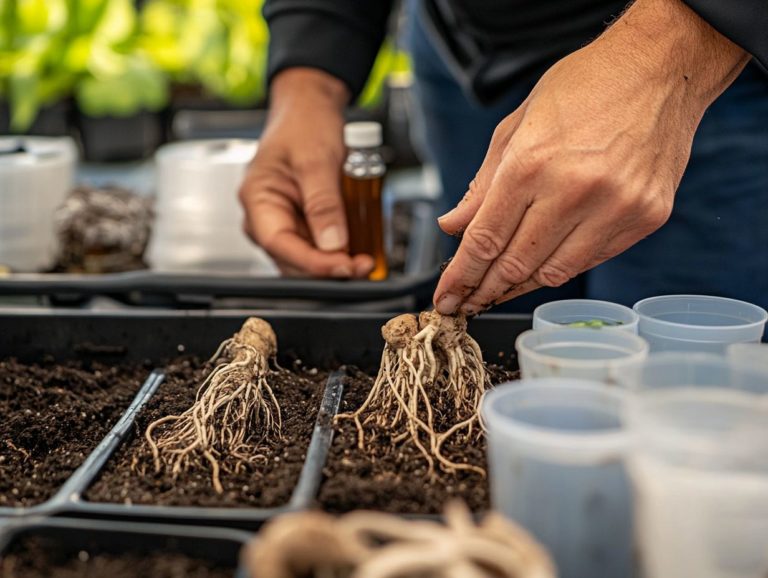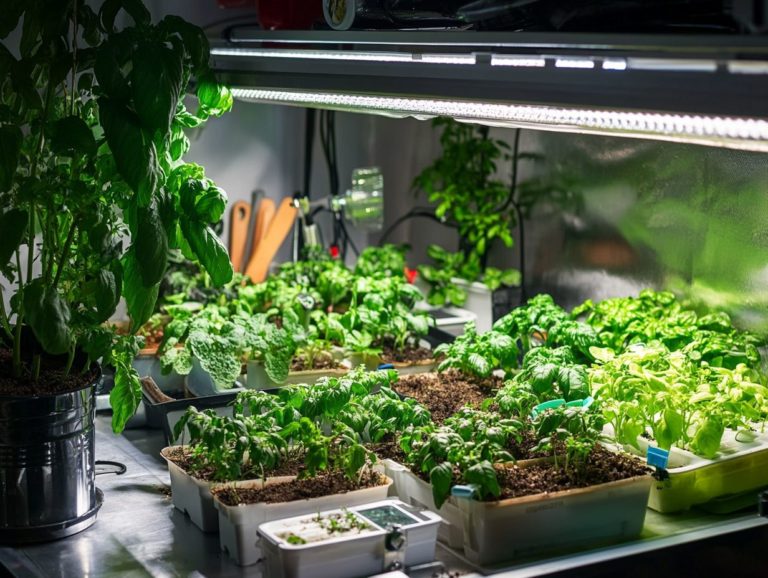Understanding Electrical Issues in Hydroponics
Hydroponics has revolutionized the art of plant cultivation, enabling efficient growth without the need for soil. The success of these systems hinges on their electrical components.
This article delves into the various electrical elements that power hydroponic setups, detailing their functions and significance for ensuring optimal plant health. You will discover common electrical issues, along with valuable troubleshooting tips and preventive measures to keep your system running smoothly.
We will also highlight essential safety precautions to ensure a secure hydroponic environment.
Ready to dive into the world of hydroponics? Let s explore this crucial aspect of hydroponic gardening!
Contents
- Key Takeaways:
- Electrical Components in Hydroponic Systems
- Common Electrical Issues in Hydroponics
- Preventive Measures for Electrical Issues
- Safety Precautions for Dealing with Electricity in Hydroponics
- Frequently Asked Questions
- What electrical problems might I face in my hydroponics setup?
- Why is it important to understand electrical issues in hydroponics?
- How can I identify an electrical issue in my hydroponic system?
- How can I prevent electrical issues in my hydroponic system?
- What should I do if I encounter an electrical issue in my hydroponic system?
- Is it safe to fix electrical issues in my hydroponic system on my own?
Key Takeaways:
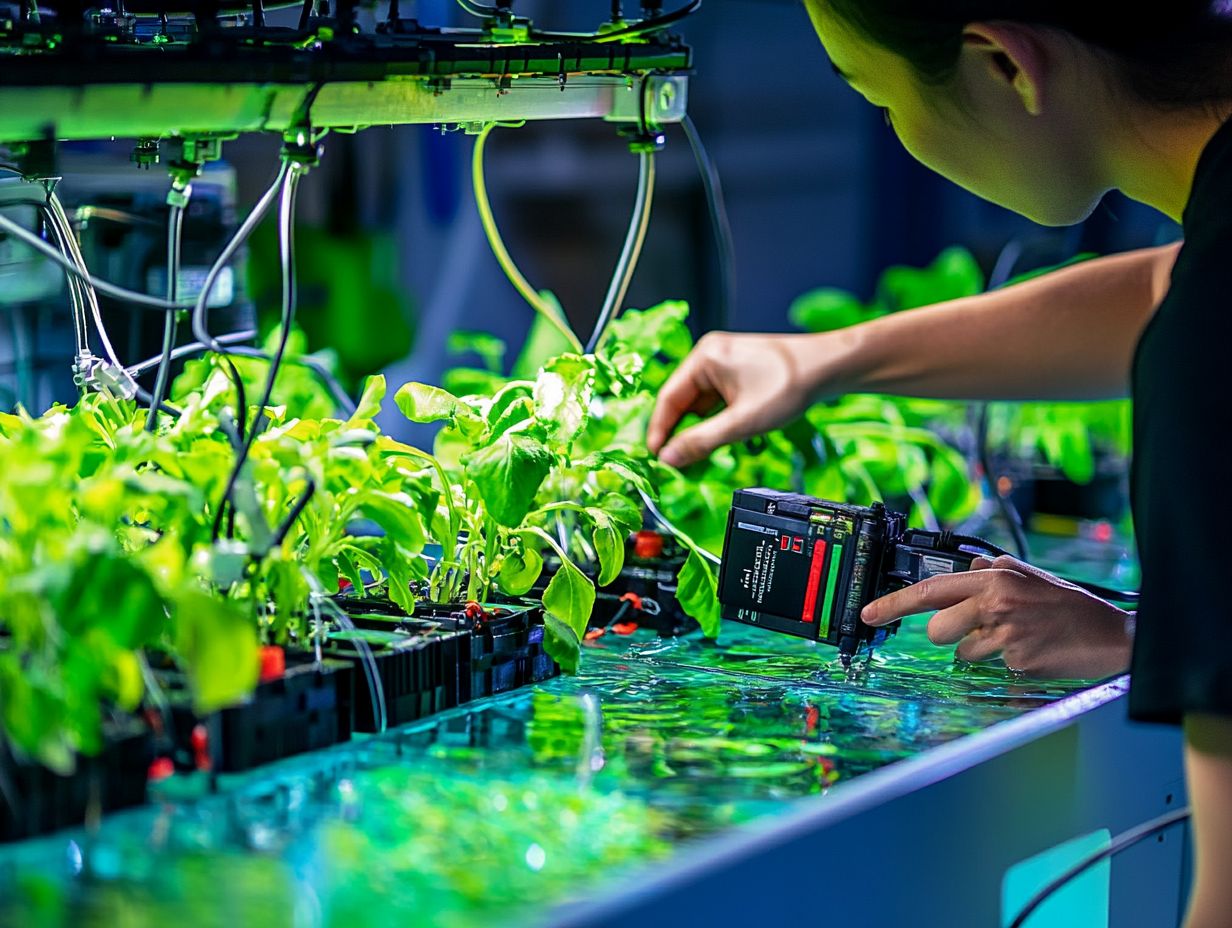
- Learn the key electrical components in hydroponics and how they support plant growth.
- Troubleshoot common electrical issues with easy maintenance tips.
- Stay safe while managing electrical parts in your hydroponic garden.
What is Hydroponics?
Hydroponics represents a groundbreaking approach to cultivating plants without soil, instead harnessing nutrient-rich water solutions that deliver essential elements directly to the roots. This innovative technique enables you to optimize plant growth by allowing precise control over environmental factors such as light intensity, temperature, and nutrient concentration.
You can successfully grow a variety of crops, including strawberries and blueberries, in a hydroponic system that maximizes yields while minimizing space requirements.
The advantages of hydroponics compared to traditional soil methods are numerous. It significantly lowers the risk of soil-borne diseases, conserves water, and enables year-round cultivation, free from the constraints of seasonal changes.
Among the different hydroponic systems available, the Nutrient Film Technique (NFT) stands out. This method involves a thin film of nutrient solution flowing over the plant roots, providing both moisture and essential nutrients.
To cultivate healthy plants, maintaining proper water quality and a well-balanced nutrient solution is essential, as these factors directly impact nutrient uptake and overall crop health. By adopting hydroponics, you can efficiently produce high-quality, pesticide-free produce, elevating your gardening experience to new heights.
Electrical Components in Hydroponic Systems
Electrical components play a crucial role in hydroponic systems, regulating essential functions that create optimal growth conditions for your plants. This includes air pumps that maintain oxygen levels, EC meters for measuring nutrient concentration, and an array of pumps and nozzles that ensure efficient water circulation.
By managing these components effectively, you can prevent issues such as nutrient lockout when plants can’t absorb nutrients and root rot, both of which can severely impact plant health and overall yields.
Types of Electrical Components
In hydroponics, you ll find a range of electrical components, each playing a vital role from air pumps and EC meters to lighting systems and pump nozzles. Every piece contributes to the overall health of your plants.
These components work harmoniously to establish an optimal growth environment, which is crucial for the success of any hydroponic setup. Timers, for example, regulate the lighting schedule, ensuring that your plants receive consistent light exposure that mimics natural conditions.
Reflectors also play a significant role, enhancing light distribution while boosting energy efficiency. Choosing the right size and type of water pumps allows for precise control over the flow of nutrient solutions, helping you avoid complications like overwatering or nutrient imbalances.
By grasping each component’s function and significance, you can proactively tackle common issues such as root rot or stunted growth, ultimately nurturing a thriving hydroponic system.
Functions and Importance
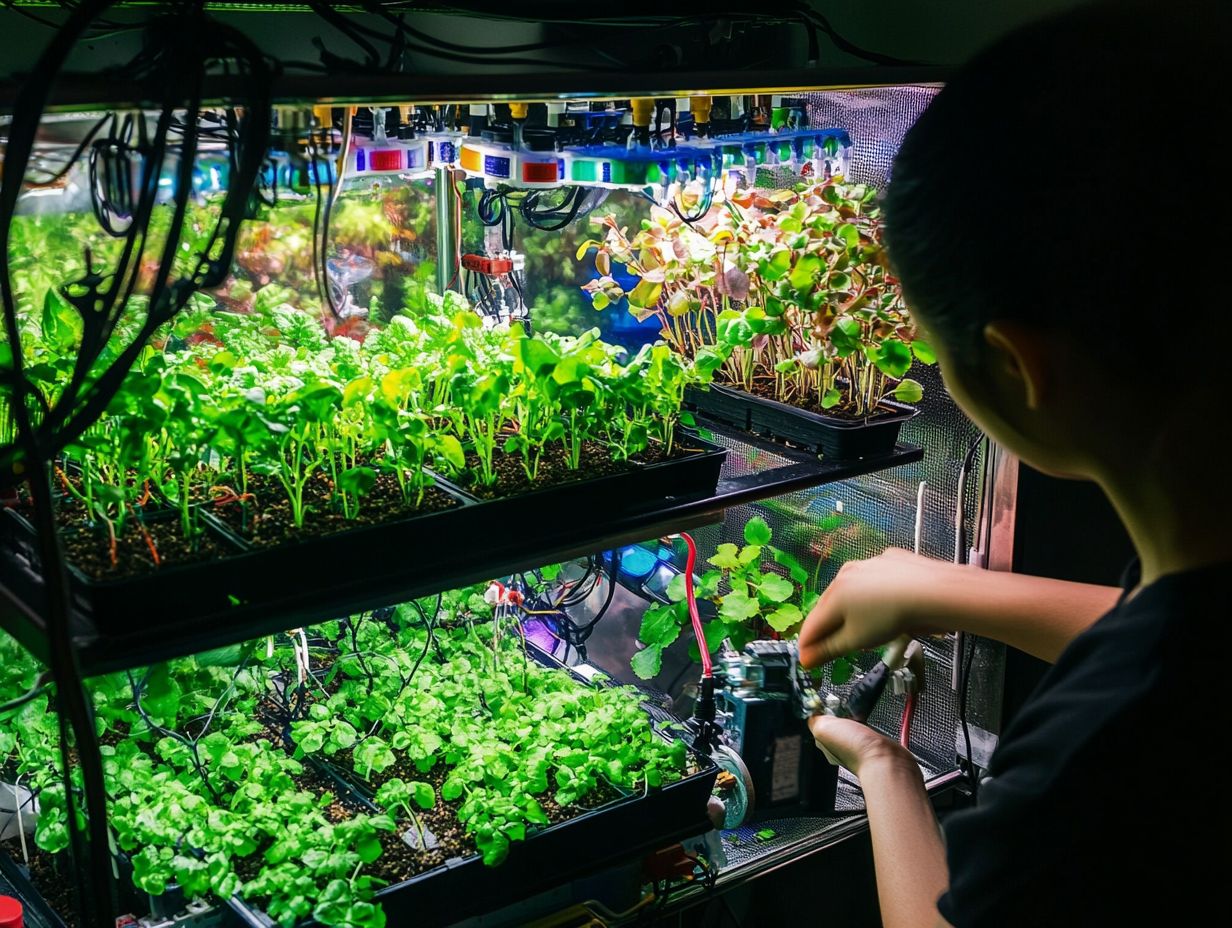
The functions of electrical components in hydroponic systems are essential for creating a stable and productive growing environment. They regulate temperature, light, and oxygen. These elements are crucial for plant health and growth.
A well-operating cleaning system prevents algae growth and maintains water quality, leading to higher yields and healthier plants.
These components help monitor nutrient delivery, ensuring that each plant receives the precise balance of minerals essential for its development. Issues like nutrient imbalances can impede growth and diminish crop quality, making the smooth operation of these electrical elements critical.
For example, timers for lighting systems simulate natural day/night cycles, while pumps ensure optimal water circulation. This effectively addresses the common challenge of root rot. Understanding these roles helps you maximize your crop output with confidence.
Common Electrical Issues in Hydroponics
Troubleshooting electrical issues is vital for plant growth. Malfunctioning pumps, faulty nozzles, weak nutrient solutions, and inconsistent light levels can cause interveinal chlorosis, root rot, and inadequate air circulation.
If these issues aren t addressed swiftly, they can lead to diminished yields and unhealthy plants. Resolve these challenges quickly to boost your hydroponic success!
Identifying and Troubleshooting Problems
Identifying and troubleshooting issues in hydroponics requires keen observation of plant health and environmental indicators. Nutrient lockout shows as leaf tip deficiencies. Root rot usually comes from low oxygen or too many nutrients.
Maintaining a detailed journal of symptoms can help pinpoint the specific electrical malfunctions that might impact your hydroponic system.
Monitoring factors like pH levels, temperature fluctuations, and humidity is essential, as these can worsen electrical issues. For example, a rise in temperature due to a malfunctioning fan may cause wilting or curling leaves, signaling heat stress. Similarly, humidity fluctuations can disrupt nutrient absorption rates, potentially resulting in over or under-fertilization.
By correlating your observations with the plants responses, you can diagnose problems more accurately. Conducting regular checks on electrical components, such as timers and pumps, will help prevent further complications, ensuring a healthy and productive hydroponic environment.
Preventive Measures for Electrical Issues
Preventive measures for electrical issues keep your system running smoothly and save you money. Regular maintenance of components like air pumps and EC meters is vital for mitigating problems like algae growth and nutrient toxicity.
Simple actions, such as cleaning nozzles and ensuring proper airflow, significantly enhance system reliability and promote robust plant growth.
Stay proactive with your electrical components to ensure a thriving hydroponic garden!
Tips for Maintaining Electrical Components
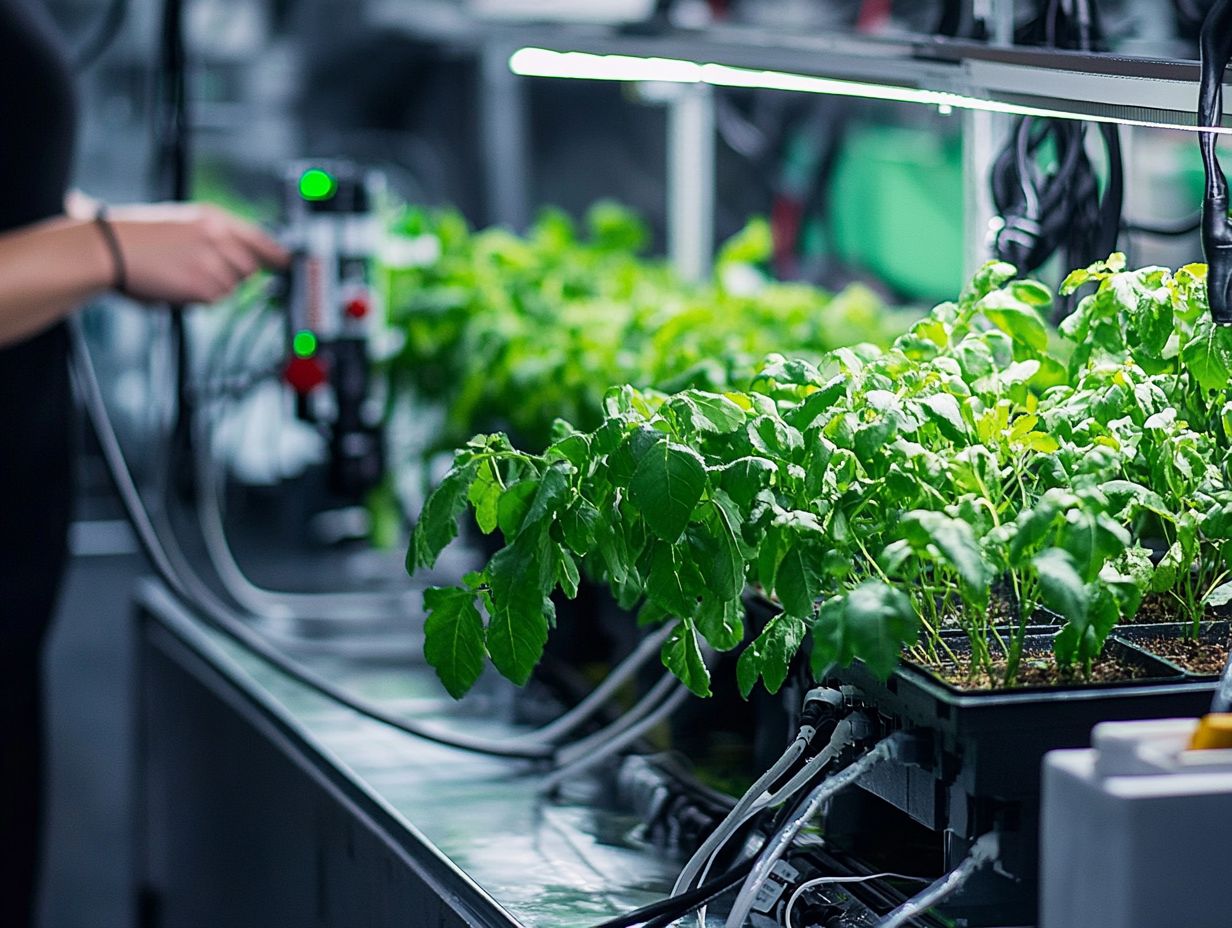
Maintaining electrical components in hydroponic systems requires a few key strategies that can significantly boost both system efficiency and plant health. Make it a habit to regularly clean the pump nozzles, ensure that the air stones function optimally, and check the integrity of your wiring connections. Always follow safety guidelines while handling electrical systems; it minimizes the risk of failures and creates a productive growing environment.
When cleaning the pump nozzles, use a soft brush or cloth to gently remove any debris or buildup that could restrict water flow. For the air stones, inspect them for clogs and replace any that show signs of wear. Check your wiring connections for corrosion or fraying and ensure they secure to prevent unexpected power outages.
Scheduling routine inspections helps you spot potential issues before they become major headaches, keeping your system running smoothly. By prioritizing these maintenance practices, you extend the lifespan of your equipment and cultivate a healthier environment for your plants to thrive.
Safety Precautions for Dealing with Electricity in Hydroponics
When working with electricity in hydroponics, always follow safety guidelines to safeguard both yourself and your plants. Ensure that all electrical components are thoroughly insulated, and avoid allowing water to come into contact with bare wires this simple step can avert serious hazards.
Regularly maintain your electrical systems, including the cleaning apparatus, to minimize risks like electrical shocks or short circuits. These measures help create a secure and thriving environment for your hydroponics setup.
Proper Handling and Maintenance
Proper handling and maintenance of electrical components in hydroponics are vital for ensuring a safe and productive gardening experience. Regularly check and clean wiring connections, monitor water quality to prevent corrosion, and ensure that all components are positioned away from water sources. These proactive measures enhance system efficiency and help you avoid common electrical issues.
Make it a priority to check your timers and sensors, as these devices significantly contribute to automating processes and ensuring plant health. Opting for products specifically designed for hydroponics helps maintain optimal performance. When issues arise, addressing them promptly saves both time and resources.
Train your staff to be vigilant about safety. By fostering a culture of vigilance, you create a healthy environment for your plants while minimizing risks associated with electrical failures.
Frequently Asked Questions
What electrical problems might I face in my hydroponics setup?
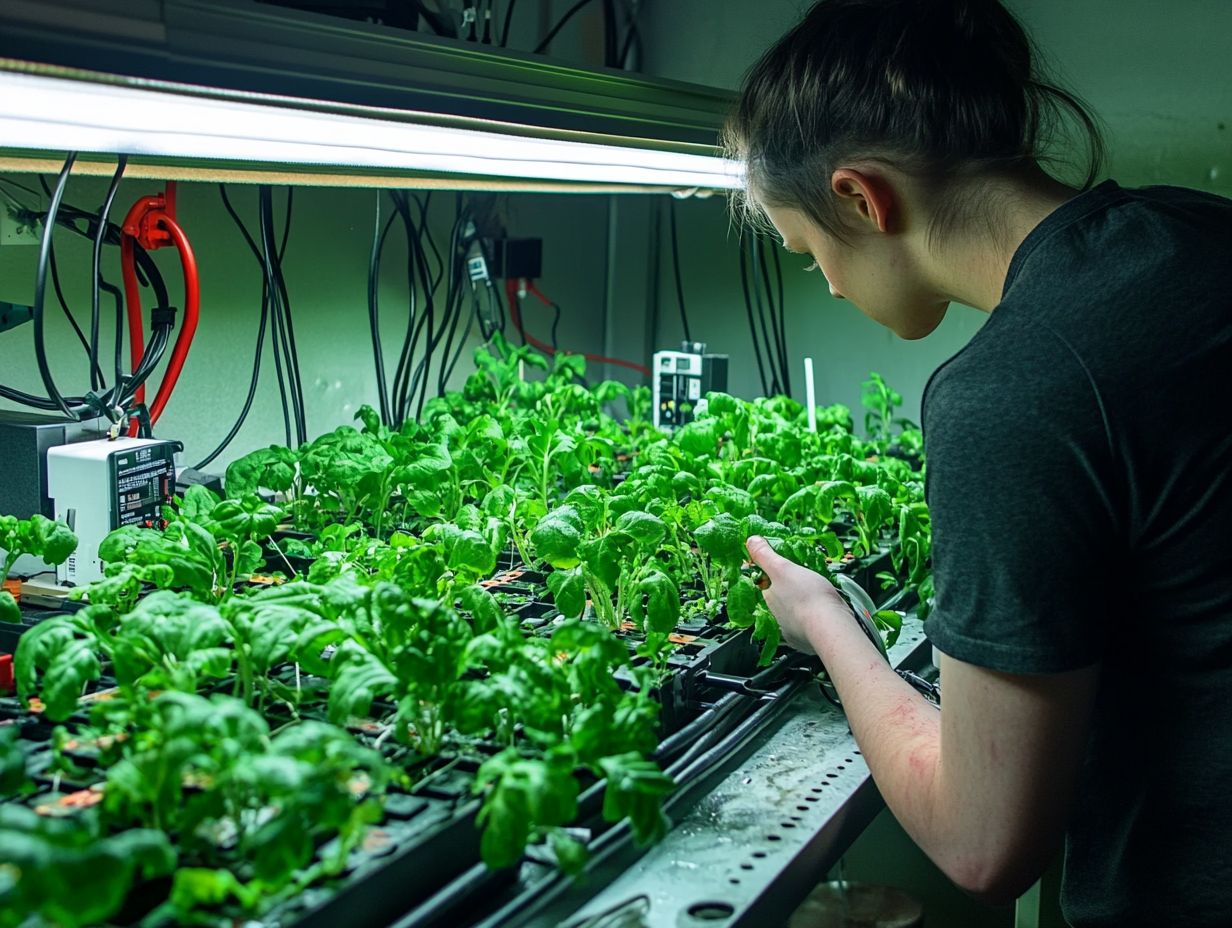
Common electrical issues in hydroponics include power outages, damaged wiring, and faulty components like timers or pumps.
Why is it important to understand electrical issues in hydroponics?
Understanding electrical issues is crucial for maintaining the proper functioning and safety of your hydroponic system. Ignoring or improperly addressing these issues can lead to crop failure or even fire hazards.
How can I identify an electrical issue in my hydroponic system?
Signs of an electrical issue in a hydroponic system include flickering lights, unusual noises or vibrations, and non-functioning equipment. Regularly inspect your system for any potential issues.
How can I prevent electrical issues in my hydroponic system?
Preventative measures for electrical issues in hydroponics include using surge protectors, properly grounding all equipment, and regularly maintaining and inspecting electrical components.
Stay vigilant with your hydroponics system and ensure your plants thrive!
What should I do if I encounter an electrical issue in my hydroponic system?
If you encounter an electrical issue, immediately turn off all power to the system and unplug all equipment. Assess the issue and consult a professional if needed.
Is it safe to fix electrical issues in my hydroponic system on my own?
If you notice symptoms like stretched plants (plants that grow tall and thin due to insufficient light) or small yields (a lower than expected amount of produce), these could indicate an electrical issue affecting your plants’ health.
It’s crucial not to attempt fixing electrical issues yourself. Consult a professional electrician to tackle electrical problems effectively.

